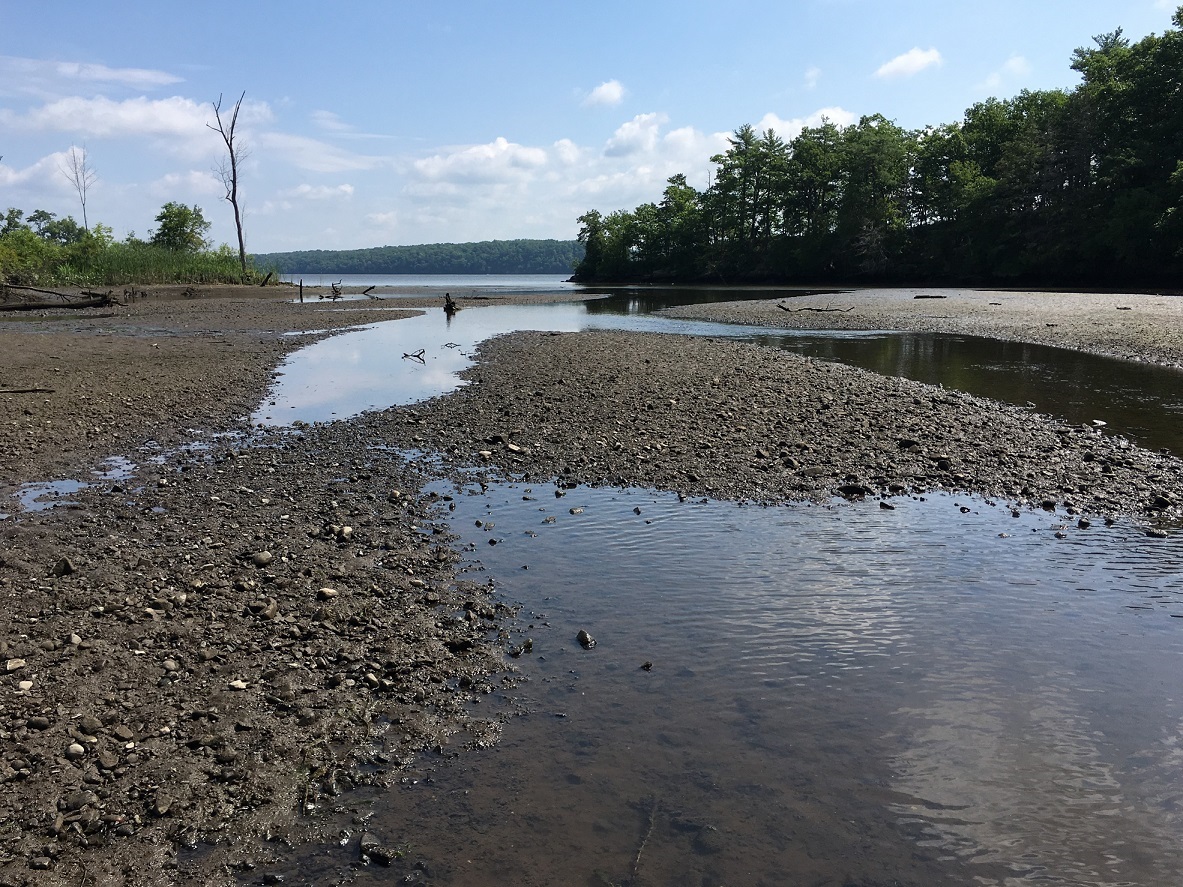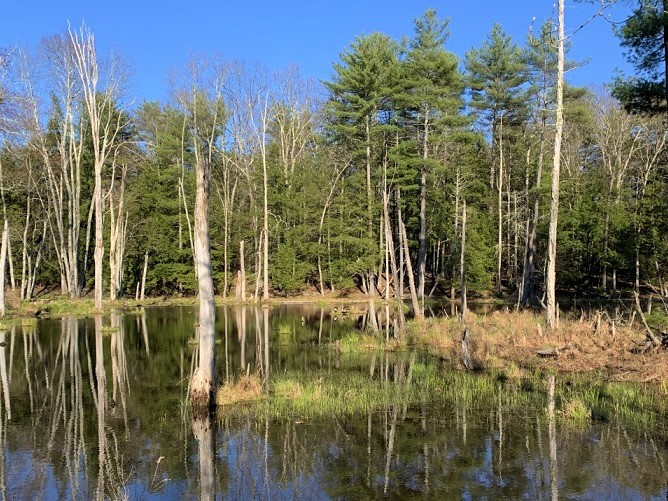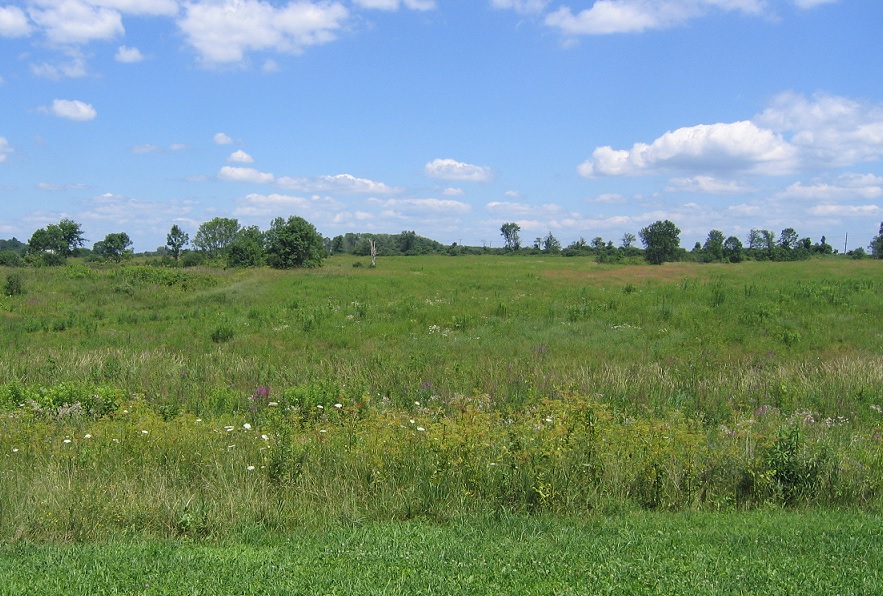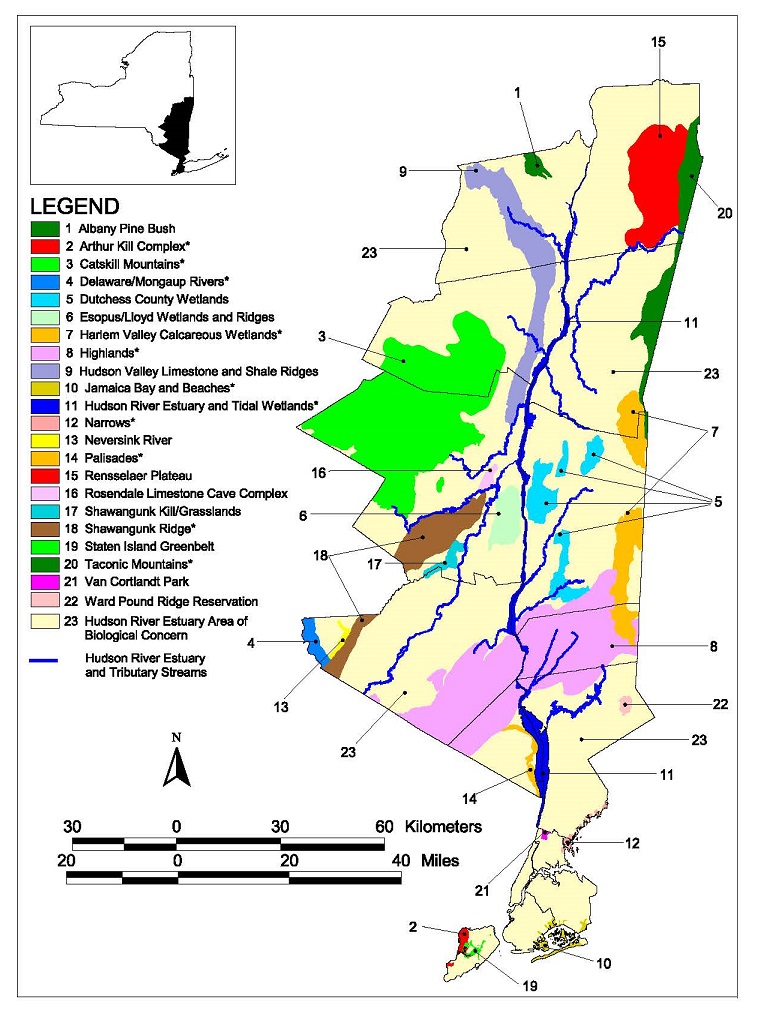Conservation Priorities in the Watershed
At the local level, conservation priorities should reflect what a community values, but they can also take into account what is known about larger-scale, regional priorities. The following section describes conservation priorities that have been identified in the estuary watershed through scientific analysis and input from many partners and stakeholders. When individual and community actions can support these regional priorities, there is greater opportunity for successfully protecting the estuary ecosystem.
Habitat Priorities
The Wildlife and Habitat Conservation Framework (Penhollow et al. 2006) was based on a decade of inventory and study that cataloged the species and habitats that form the ecosystem of the Hudson River estuary watershed. While ongoing analyses continue to improve our understanding of conservation priorities, the following major habitat types described in the Framework remain the most significant in the watershed, along with their associated wildlife and plants. The following list includes highlights about these habitat priorities; to learn more, refer to Part II of the Framework.
- Coastal habitats include tidal wetlands, tidal creeks, mudflats, salt marshes, and sand beaches. These habitats support waterfowl, wading birds, marine and estuarine fishes, and many species of turtles, molluscs, and raptors, including the bald eagle.
- Wetland habitats include freshwater tidal swamps and brackish tidal marshes, swamps, woodland pools, wet meadows, fens, and bogs. Wetlands provide habitat for a variety of wildlife including ducks; amphibians like wood frog and marbled salamander; turtles such as the NYS-threatened Blanding’s turtle; and mammals like muskrat and beaver.
- Tributaries and riparian areas include high-quality streams and floodplain habitats. They provide important habitat for many species including trout and black bass, stream salamanders, river otters, cerulean warbler, and wood turtles.
- Unfragmented forest and habitat corridors support many species, including bobcat, black bear, barred owl, and red-shouldered hawks, as well as summer breeding habitat for migratory songbirds like wood thrush.
- Open uplands and barrens include grasslands, shrublands, agricultural lands, and rarer communities such as pitch-pine scrub-oak barrens. They provide increasingly rare habitat for bird species like bobolink, meadowlark, grasshopper sparrow, golden-winged warbler, and northern harrier.
- Cave and cliff habitats include natural rock formations and abandoned mines that provide critical roosting and wintering habitat for bats, including rare species like the federally endangered Indiana bat. Cliffs support nesting by NYS-endangered peregrine falcon and common raven, and constitute important pathways for migrating hawks.
Significant Biodiversity Areas
The Framework recognized 23 significant biodiversity areas (SBAs) in the watershed, including a Hudson River Estuary Area of Biological Concern that encompasses the entire estuary corridor, due to its national significance for biodiversity in New York, New England, and the mid-Atlantic region.
The other 22 SBAs are distinct areas that contain high concentrations of biological diversity or unusual ecological features that contribute to biological diversity, including large wetland complexes, unfragmented forests, and sharp elevation changes and uncommon geologic features.
The SBAs carry no regulatory designation. They were intended to encourage coordination of conservation partnerships between willing stakeholders and provide a mechanism for communicating information about biodiversity in the Hudson Valley. New data sets, such as core forest habitat or marsh migration pathways, can be used in conjunction with the SBAs to further inform conservation planning.
New York State Open Space Conservation Plan
Many of the conservation priorities in the estuary watershed, including significant biodiversity areas, are included in New York State's 2016 Open Space Conservation Plan. The plan serves as a blueprint for the State's Open Space Program, guiding the investment of land protection funds from the Environmental Protection Fund. Goals of the plan range from protection of water quality and wildlife habitat, to addressing climate change and health of local communities.





